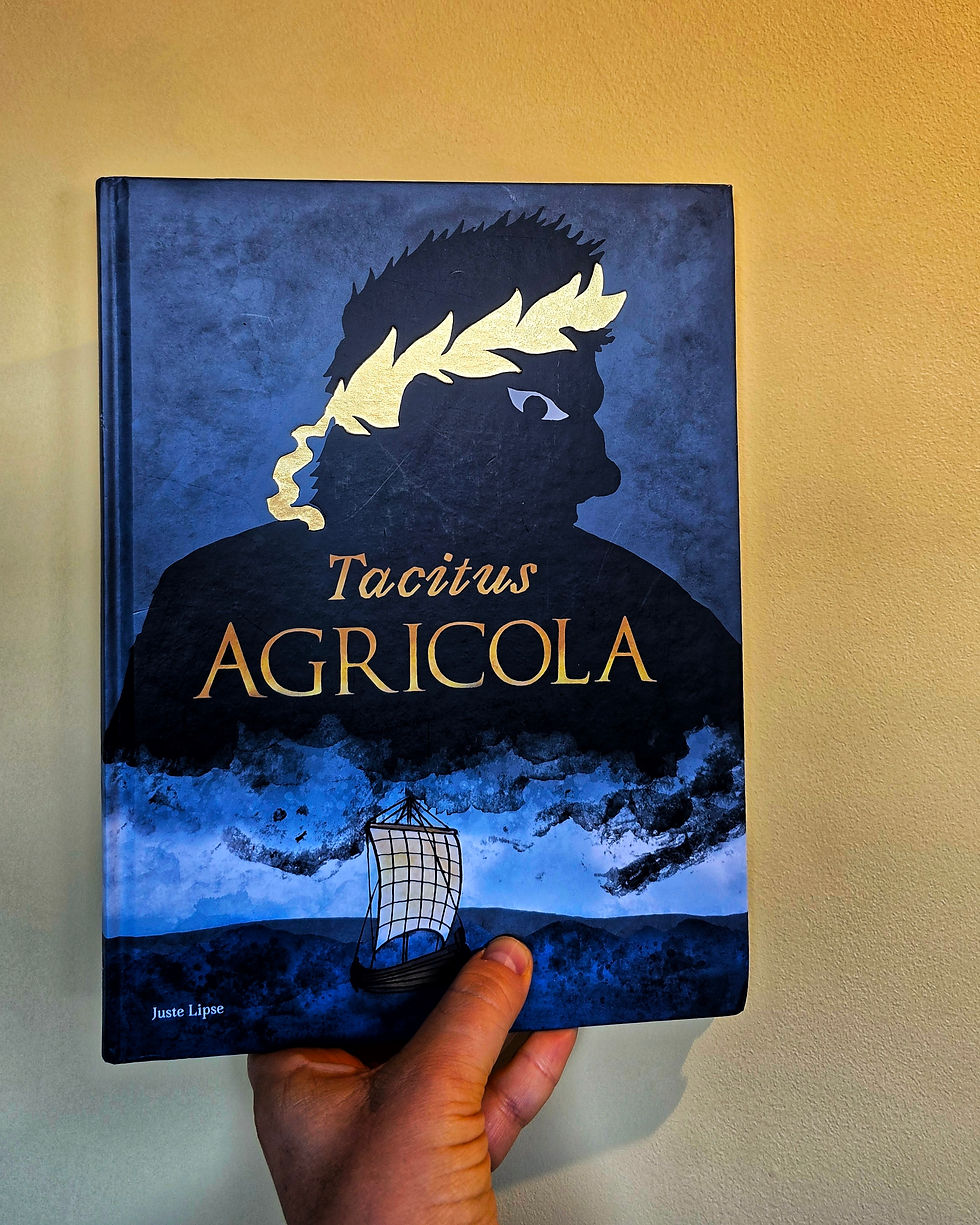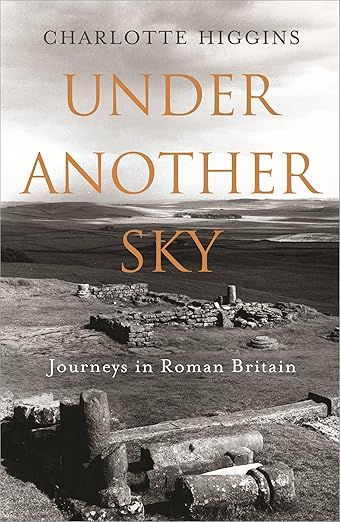Book Review: Tacitus' Agricola Is Brought to Life in Atmospheric New Graphic Novel
- Ana Martin

- Sep 16
- 4 min read
This post contains affiliate links, which help me keep producing free resources at no extra cost to you. As an Amazon Associate, I earn from qualifying purchases, but I only ever recommend products that I would use and believe are worthwhile.
Tacitus' Agricola at a glance:
I am going to go straight to the chase here: this book is an absolute stunner that every lover of Tacitus will want to get their hands on. If that is you, it will probably spend some time on your coffee table too: that I can assure you!
Let me explain: what we have here is mainly the original Tacitus, based on the text in the Cambridge Green and Yellow (Yessss!) as edited by A. J. Woodman and C. S. Kraus. Moody and characterful comic illustrations accompany the text in a carefully curated visual storyline. The text has been minimally amended, and the choice of passages is perfect to carry the story through.
However, Tacitus is not alone; Cassius Dio makes an appearance (in Greek), and so do Pliny and Cato, as well as the well-known style of the Latin in the Astérix comic books! Advanced Latinists will indeed have plenty of fun spotting these nuggets throughout. Beyond the intertextual sophistication, the book can also be simply read for sheer enjoyment, and it is a welcome bridge that invites us to enjoy Tacitus and his work in a stimulating way.
Does the book make Tacitus easier to read? Yes and no. Obviously, the illustrations guide the narrative and, well, illustrate the text. However, Tacitus is still Tacitus, and for full appreciation of the language itself, either a high proficiency in Latin or excellent knowledge of the story, plus some Latin knowledge and a good dictionary, is essential.
Nobody here said Tacitus is easy!
Having said this, this book helps make Tacitus approachable, appealing and more comprehensible. It is also a gateway to reflecting on the philosophy and political thinking present in his work, which is as relevant today as it was in Antiquity. If I may add a sidenote, as a Mediterranean person who has moved to the UK, I can also confirm that it speaks to the more universal experience of adapting to Britain, constant drizzles and all, coming from continental Europe.
Possible ways to approach this graphic novel
Before writing this review, I gave some thought to the ways in which teachers and enthusiasts might want to use this book. Here are some thoughts:
Aesthetic enjoyment:
The book is a work of art and beauty, which, in an age of AI visual slop, has to be highlighted. Let me show you a couple of snapshots as an example (yes, I use that strange frog to hold pages):
Reading for pleasure:
If you are familiar with Agricola, the book is a pleasure to read, and it offers a novel angle and renewed enjoyment for returners. For me, it was an excuse to revisit the original, browse translations, and rethink the political messages Tacitus conveys, along with his worldview, at a time when travel was more restricted and Europe was less unified.
For teachers: as a stepping stone to accessing Agricola and Tacitus more broadly with these approaches:
I recommend getting the French translation of the book if you read French. In that edition, you get not only a reference translation, but also notes on how the text was composed and (lightly adapted) alongside historical information, including a useful list of characters.
There is also a very good explanation of the process behind the creation, which I have personally found fascinating, and in itself a very worthwhile read for those interested in classical reception.
You can introduce the story via summaries and then prepare a scaffolded approach to a selection of passages, or use one of the books in the related reading below.
For teachers of A-Level, particularly A2 comprehension and composition papers, the wealth of images to use in class is a real treasure trove, and separate panels can be used for storyasking or as stimuli to review vocabulary or grammar features.
If you would like to see how storyasking and other comprehensible input friendly methods work in the Classics classroom, you can visit my Patreon for inspiration.
For a bit more background on the monumental work behind this text, I recommend visiting the website of the French translation, where you can find examples of the original artwork and material sources behind the illustrations and an overview of the choices regarding the narrative line. Finally, if you would like to read more about the author, Édouard Michel, this interview will give you a good introduction to his trajectory and work.
Recommended related reading:
You can get started with the Penguin if you are looking for a classic translation (1948) with a modern introduction and notes (2009).
A highly readable book to immerse yourself in the world of Roman Britain across time. Beautifully written and poetic.
You cannot go wrong with a Loeb if you are looking for a solid bilingual edition.
If you liked this book review, let me know in the comments or head to my Patreon to keep the conversation going.














Comments